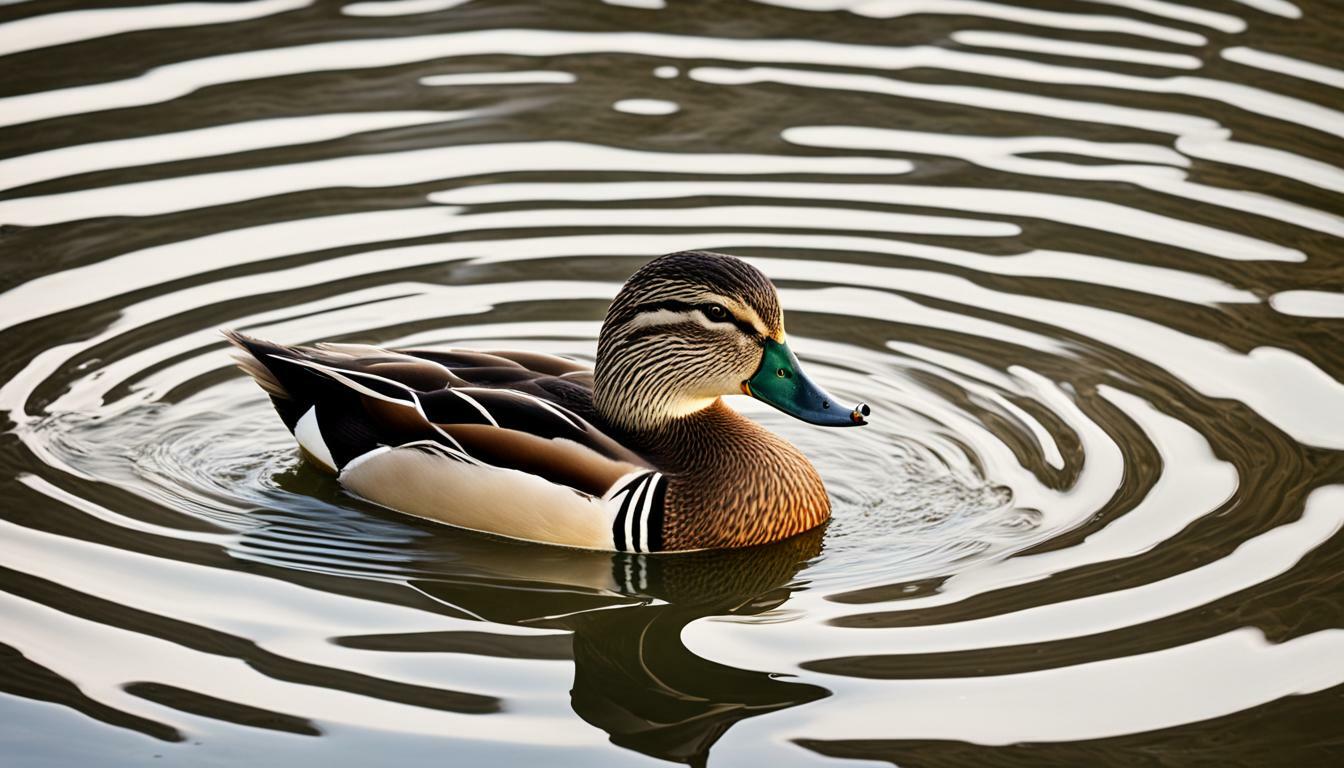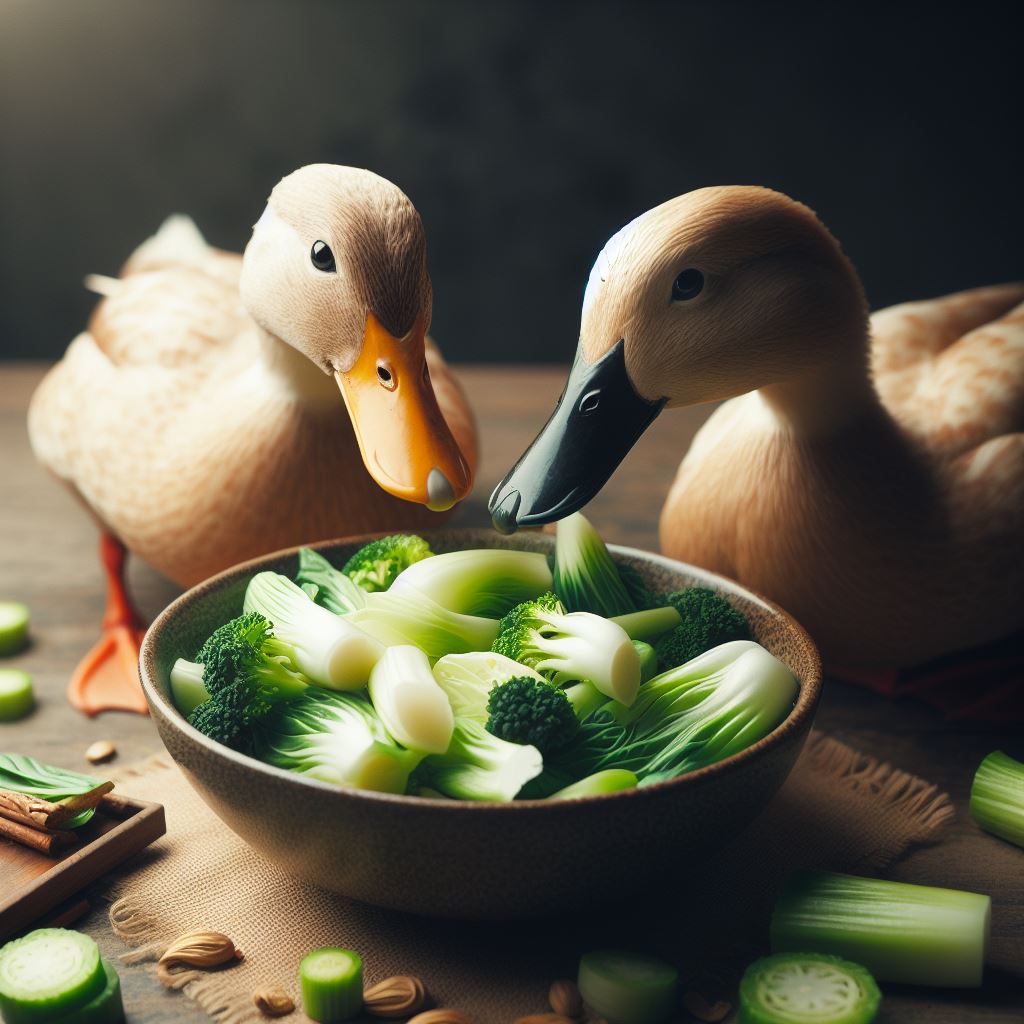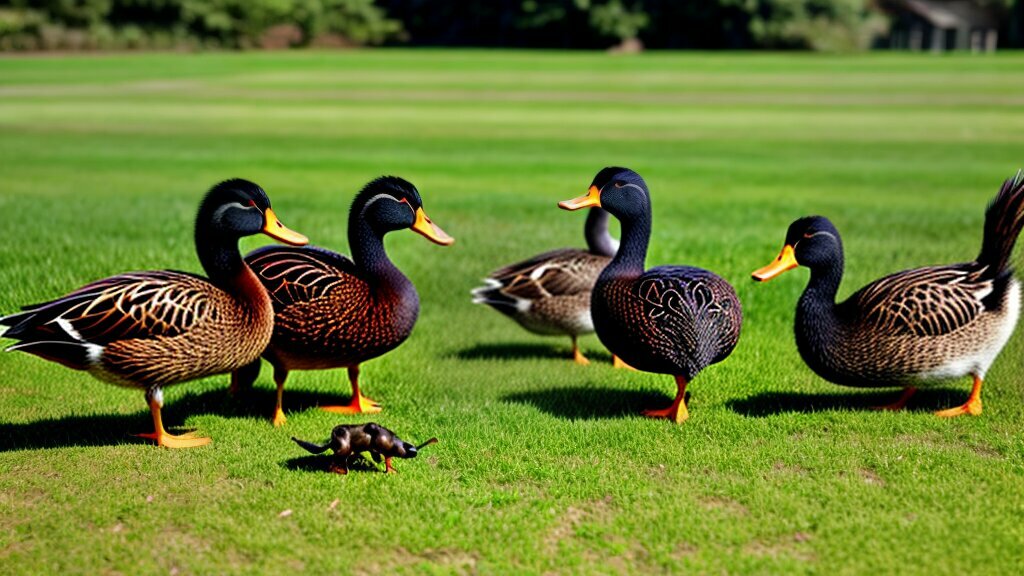Understanding What It Means When A Duck Vibrates Its Head

Table of content:
- Why Do Ducks Shake Their Heads?
- Different Types of Duck Head Shaking
- What Do Duck Head Shakes Mean in Different Contexts?
- Why Do Male Ducks Shake Their Heads So Frequently?
- Do Ducklings Perform Head Shaking Behavior Too?
- Unusual Head Shaking as a Sign of Illness
- What Dangers Do Ducks Face When Shaking Heads?
- Conclusion
Ducks display a variety of interesting behaviors and body language using their heads and bills. One distinctive movement that often catches people’s attention is when a duck rapidly shakes or vibrates its head up and down. This unusual phenomenon has a number of potential meanings and functions depending on the context.
Why Do Ducks Shake Their Heads?
Head shaking serves multiple purposes for ducks. Here are some of the main reasons ducks vibrate their heads:
Feeding Behavior
Ducks shake their heads to help swallow food and sip water. The motion allows them to use their bills to strain food particles out of the water. Rapid head movements bring water into the bill while leaving the food behind to be swallowed. Male ducks have also been observed shaking their heads during courtship feeding of females.
Removing Water
In addition to collecting food items, the head-shaking motion shakes water off their bills and heads. Ducks are constantly diving to reach underwater food sources. A quick head shake when resurfacing helps flick excess water off their faces and bills.
Social Communication
Head bobbing displays are an important part of social communication for ducks. Males frequently perform ritualized head shakes as a territorial display or as part of courtship rituals. Females also shake their heads but less vigorously than males.
Aggression and Threat Displays
When feeling threatened or aggressive, ducks will shake their heads. Rapid head movements often proceed or accompany threatening bill gestures, vocalizations, or physical attacks. A forceful head shake serves as a warning to back off.
Preening
Ducks use their bills to preen and groom their feathers. A duck shaking its head may be working to rearrange feathers or apply oil from the preen gland to coat feathers and provide waterproofing. The motion helps fluff, separate, and realign feathers after preening.
Displacing Water
When water becomes lodged around the head and bill, ducks shake rapidly to displace it. This is often seen when a duck emerges from deep water. A vigorous head flick is an efficient way to clear excess water.
Different Types of Duck Head Shaking
Not all headshakes are the same. Ducks perform distinct motions depending on the context. Here are some variations:
Bill Vibration
One of the most conspicuous motions is when a duck rapidly opens and closes its bill. Often the head and neck remain stationary while the bill alone quivers. This behavior, sometimes described as bill vibration or bill clapping, has multiple functions. It can signify a threat, serve as a courtship display, or help remove water from the bill.
Rotary Head Shaking
In this motion, a duck shakes its head in a circular motion. The head rotates in one direction, stops, then rotates back the other way in a repeated pattern. Rotary shaking often accompanies other displays like head bobbing. It is frequently used by males during courtship or aggression.
Vertical Head Bobbing
Head bobbing involves a duck lowering its head towards the ground, then abruptly lifting it back up. The sharp upward motion is achieved by a quick contraction of the neck muscles. Males often perform vertical head bobs in courtship displays or to signal aggression.
Lateral Head Shaking
A duck shaking its head from side to side in a swaying motion is demonstrating lateral head shaking. This less pronounced motion is sometimes seen in ducks that are resting or preening. It does not signify aggression or courtship in the way vertical head bobbing does.
What Do Duck Head Shakes Mean in Different Contexts?
Now that we’ve explored the various types of head shaking, let’s break down what these duck behaviors communicate in specific situations:
During Feeding and Foraging
When ducks are engaged in feeding activity such as dabbling in shallow water or tipping up to feed from deeper areas, they will frequently shake their heads. This allows them to process food items and water. Head shaking in these situations is an instinctual feeding behavior not intended to convey any social information.
As Social Displays Between Ducks
Male ducks have complex courtship rituals involving elaborate visual displays and vocalizations. Rapid head shaking is an important part of these social signals. Males shake their heads vigorously to attract the attention of females and demonstrate their suitability as mates. Females may also perform head shakes, though less pronounced, in response to male displays.
As Threat or Aggression
Ducks warn each other away using aggressive head shaking combined with threatening bill gestures. Male ducks defend their territory and repel rival males by shaking their heads in an assertive manner. If the head shake is ignored, it may escalate to physical confrontation.
To Remove Water
Ducks emerging from water give their heads a forceful shake to eject water rapidly. This efficient movement serves the practical purpose of drying the head rather than communicating social information. It helps the duck’s feathers retain insulation and buoyancy.
During Preening and Bathing
When ducks are focused on cleaning, rearranging, and oiling their feathers during preening or bathing, they will periodically shake their heads. This motion helps to fluff up feathers and settle them back into place after disruption by the bill. It is not intended to signal anything to other ducks.
When Disturbed or Startled
A duck that is suddenly startled may rapidly shake its head as part of a nervous reaction. This is not a purposeful signal, but rather an instinctive response of surprise or alarm at an unexpected disturbance. It may be accompanied by an abrupt standing or change in direction.
Why Do Male Ducks Shake Their Heads So Frequently?
The frequency of head-shaking behaviors differs between male and female ducks. Males are known for almost constant head bobbing and bill vibration, especially during breeding season. Here are a few reasons for this:
Establishing Social Hierarchy
Male ducks must establish and maintain a dominance hierarchy. Frequent head shaking is used to signal aggression and claim status over other males. Displaying almost continuously reminds rivals of their position.
Attracting Mates
Shaking motions allow males to attract the attention of females and demonstrate their suitability for mating. Constantly displaying shows off their vigor, health, and genetic fitness for reproduction.
Defending Territory
By persistently announcing their presence through shaking and bobbing, male ducks stake claim to territory and warn away intruders. Ceaseless displays reinforce boundaries.
Inciting Competition
The constant presence of displaying males provokes rival males to increase their displays. This perpetuates an aggressive environment where only the strongest and most dominant males can prevail and gain access to mates.
Synchronizing Courtship
Head-bobbing males help synchronize the head-shaking displays of surrounding ducks. This amplifies the visual signal for competing males and incites receptive females to display.
Do Ducklings Perform Head Shaking Behavior Too?
Ducklings begin performing rhythmic head-shaking behaviors almost immediately after hatching. The motions are jerky and uncoordinated at first but become more controlled with age. Here’s how their head shaking develops:
Hatchlings
Just-hatched ducklings shake their heads instinctively as they begin pecking for food. The shaking is imprecise but helps guide food toward their bills. Their wet down also causes them to shake frequently.
Early Development
As ducklings grow over their first 2-3 weeks, their head shaking takes on a more distinct rapid bobbing motion. They develop timing and control for feeding and removing water.
Juveniles
Approaching fledging age around 8-10 weeks, juvenile ducks perform head shakes perfected for feeding and preening. Males begin ritualized displays, while females shake less vigorously.
Maturing Ducks
Head-shaking motions continue to be refined as ducks reach sexual maturity. Adult males perform elaborate shaking rituals for courtship and dominance. Females display much less frequently than males.
Unusual Head Shaking as a Sign of Illness
While most head shaking in ducks is normal behavior, some abnormalities may indicate illness or parasites. Here are signs of unhealthy head shaking:
Loss of Control
Uncoordinated shaking with inability to hold the head steady can signal neurological issues like botulism or lead poisoning. The duck may appear disoriented.
Constant Shaking
If head shaking becomes constant and disruptive to eating and socializing, it may indicate a parasite infestation or skin irritation. Mites and lice can elicit constant discomfort.
Off Balance Appearance
Unnatural head positions like tilting to one side could mean an inner ear infection. The duck may have difficulty maintaining balance.
Inflamed Skin
Irritated areas of redness or swelling around the head and neck suggest injury or infection. This can cause unusual shaking due to pain and discomfort.
Lethargy
A sick duck will often lose energy and motivation for normal shaking displays. Lethargy and weakness may indicate illness or severe malnutrition.
What Dangers Do Ducks Face When Shaking Heads?
While head shaking serves important functions for ducks, the rapid motions also carry some risks:
Impaired Vision
Shaking causes temporary loss of visual focus on the surroundings, creating short intervals of vulnerability. Ducks try to minimize this by shaking only briefly.
Disorientation
Especially on land, repeated forceful shaking can briefly disorient a duck after vigorous displays. Males may stumble and lose balance after elaborate courtship rituals.
Neck Injury
The intense muscular exertion required for shaking could potentially strain the tendons and joints of the neck over time. However, ducks are adapted for these movements.
Heat Loss
During wet shaking, droplets are flung rapidly from the head and bill. This can contribute to ducklings chilling too quickly in cold temperatures or after swimming.
Water Ingestion
Overly forceful bill shaking underwater carries a small risk of aspirating water into the trachea if the timing is off. Ducks avoid this by controlling head speed and angle.
Conclusion
In summary, the function of head shaking depends greatly on the context of ducks. Both male and female ducks utilize rapid head and bill movements to efficiently feed, remove water, preen, and socially communicate. Intricate head-bobbing rituals performed by male ducks serve to attract mates, defend territories, and signal aggression through visual displays.
While shaking is necessary duck behavior, abnormal shaking may indicate sickness, parasites or neurological issues if it impairs normal functioning. Ducks mitigate risks like disorientation and vulnerability by confining shaking to brief controlled bursts. So the next time you see a duck vibrating its head, consider what information the duck may be communicating!
Welcome. I’m Adreena Shanum, the proud owner of this website, and I am incredibly passionate about animals, especially poultry. I founded adreenapets.com as a labor of love, stemming from my desire to share my knowledge and experiences with poultry enthusiasts worldwide.




